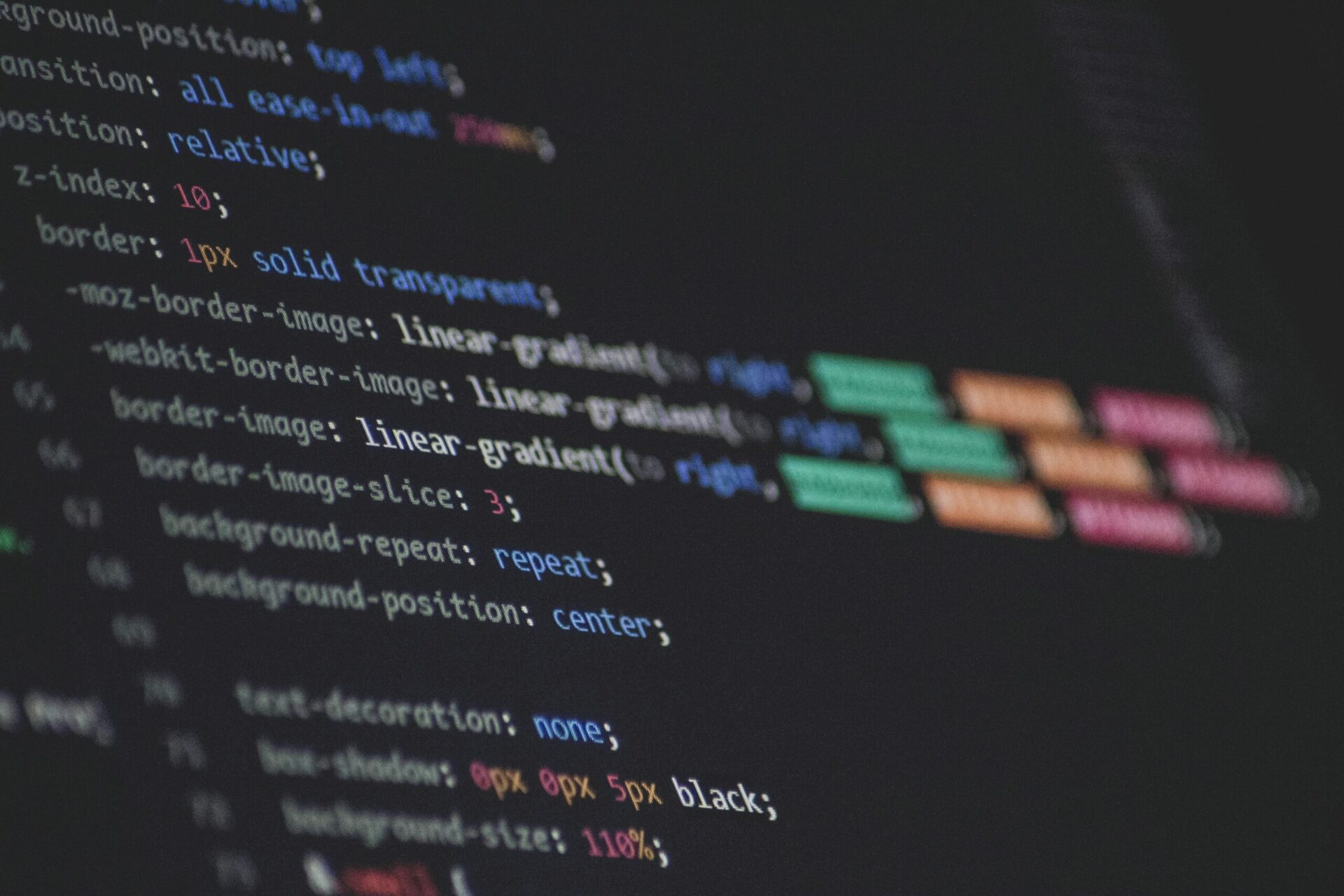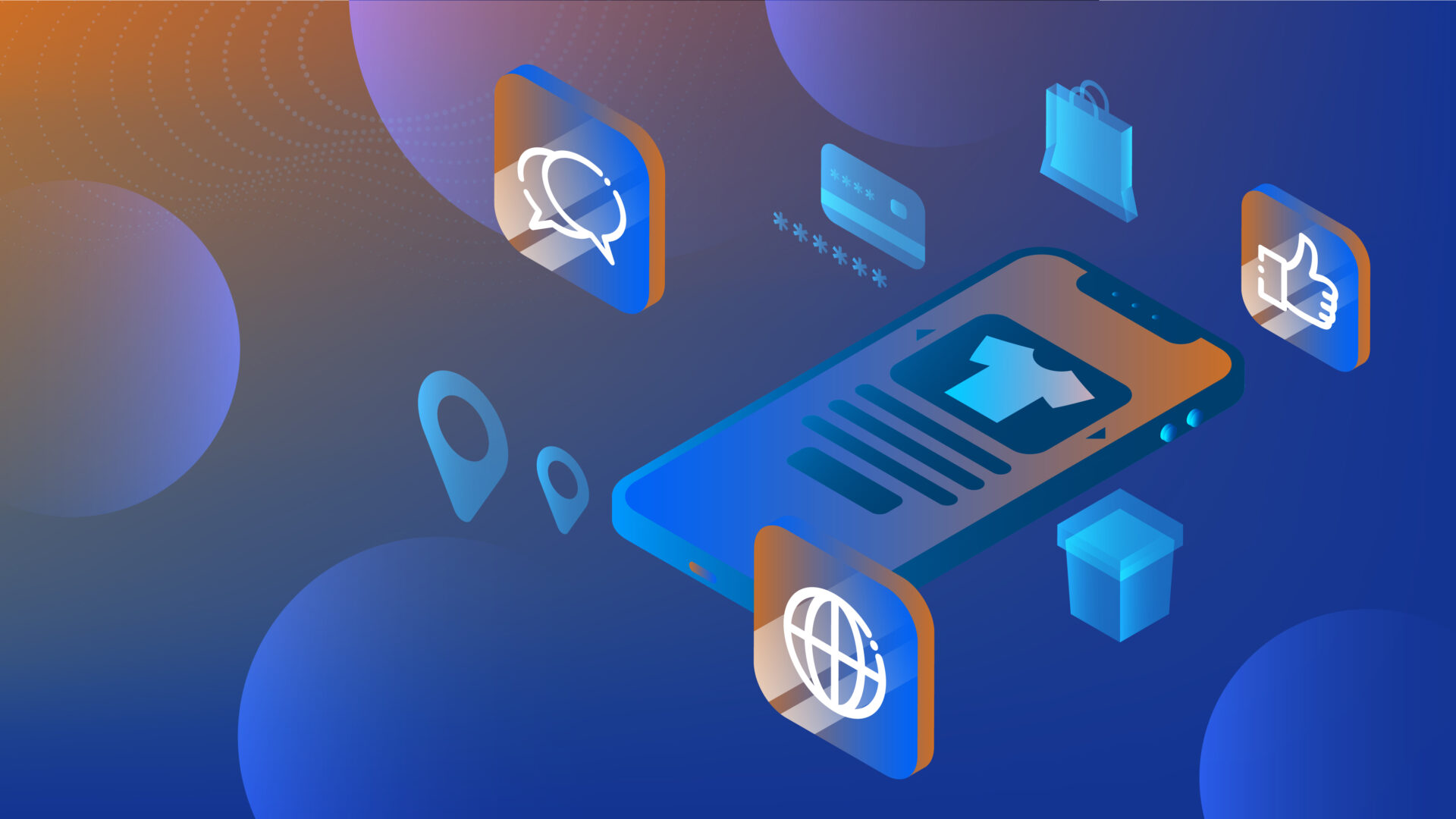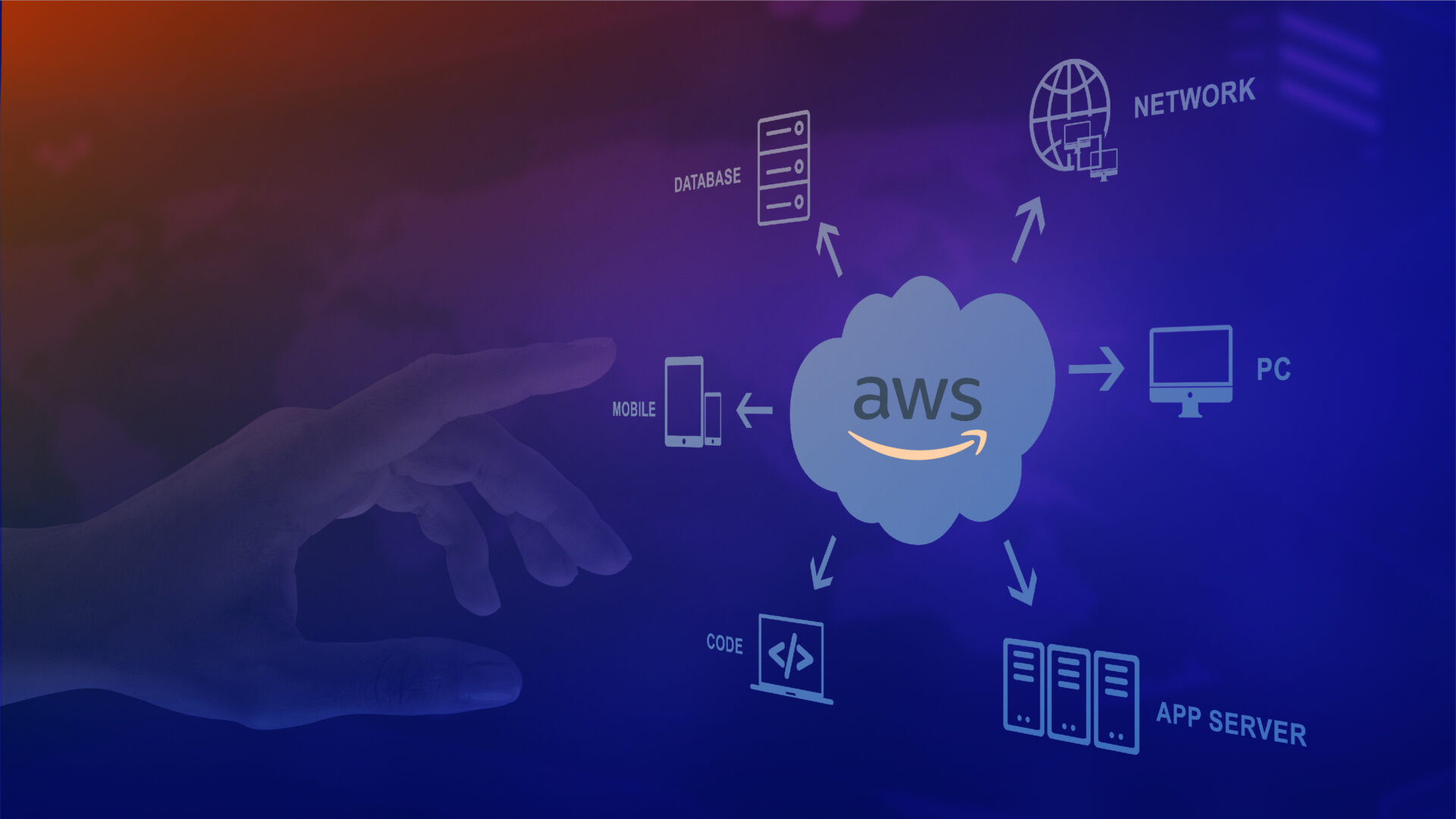In Amsterdam, over 200 IT experts and Industry Leaders gathered to explore the latest trends in software development. The event showcased how AI is transforming the playing field and how we can leverage digital transformation to create a sustainable society.
The co-hosts for the event were Mirjana Kolarov, Delivery Director at Levi9, and Dario Djurica, Software Architect at Levi9. Throughout the day Mirjana and Dario led the attendees through different ways on how to put AI and software development to use for their business goals.
We explored practical insights from real-world case studies, gaining a deeper understanding on how sustainability and agility can be impacted by the use of technology and AI in particular.
Frank Spies, AWS, on Right-Sizing AI: The Case for Small Language Models
Small Language Models (SLMs) offer businesses greater control, security, and privacy, making them a practical choice for addressing specific needs. By working backwards from customer requirements and leveraging non-commercial, open-source solutions, companies can create impactful, tailored AI implementations. Experimentation is key, with examples like document comparison in the construction industry showcasing their versatility.
SLMs excel in applications such as custom chatbots, secure document analysis, real-time translation, and fraud detection. Their ability to process data locally ensures privacy, reduces security risks, and allows for easy adaptation to industry-specific requirements. These features make them an effective alternative to larger language models for businesses focused on data integrity and control.
Practical challenges, such as hardware compatibility and importing open-source models, highlight the need for thoughtful implementation. SLMs provide a scalable, customizable solution for organizations looking to harness AI without sacrificing security or flexibility.
“Understand your requirements, test to determine the right model, customize via RAG or fine-tuning, and select the optimal hosting solution: cloud, on-premises, or at the edge.”

Zolt Varga on Trends and Future of AI in Augmented Reality
The intersection of AI and augmented reality (AR) presents exciting possibilities, but it comes with significant challenges. One of the hardest is understanding how to apply AI effectively within AR environments. Learning from large companies’ approaches to implementing AI behind the scenes is a critical step, but creating truly useful and productive applications requires a unique perspective. For many teams, the journey involves trial, error, and rethinking how AI can bring value in a mixed reality context.
Amid these challenges, the potential for innovation in accessibility stands out. If there were an opportunity to introduce a transformative AI solution, the focus would be on enhancing inclusivity. Imagine AI tools that empower individuals with visual impairments to experience the world in ways previously thought impossible. From navigating spaces to interacting with information, AI could create new possibilities for engagement, helping to bridge the accessibility gap.
The combination of AI with AR is both a technical and creative challenge, but its potential to drive accessibility and create practical, life-enhancing applications is undeniable. It’s a reminder that while the technical hurdles may be significant, the impact on people’s lives makes the effort more than worthwhile.
“Augmented Reality (AR) is changing the world. Seize the moment to get started, now!”

Henk Boelman, Microsoft, on Next Generation AI for Developers
The evolution of language models has opened up exciting possibilities for developers. The transition from simple text generation to multimodal capabilities, such as handling text, images, and real-time interactions, has been transformative. Models like GPT-4.0 showcase the dynamic potential of AI, enabling developers to create more interactive and sophisticated applications. This progression excites the community, as it pushes the boundaries of what AI can achieve.
To leverage these advancements, developers must equip themselves with the right skills. Tools like GitHub Copilot can significantly boost productivity in coding by automating repetitive tasks and offering intelligent suggestions. Beyond tools, understanding the underlying capabilities of AI models, exploring SDKs, and identifying real-world applications are crucial for developers to fully harness the power of AI in their products.
One area often overlooked is the potential of AI agents. These go far beyond basic chat interfaces, performing tasks and automating workflows in ways that can revolutionize development. From orchestrating complex processes to enabling task-oriented solutions, AI agents hold immense potential for innovation, offering developers new ways to approach problem-solving.
For those new to AI, the advice is clear: learn how it works. Gaining a deep understanding of language models and how to direct them effectively is key. By mastering what these models can do and how to control them, developers can unlock a world of possibilities in their workflows and beyond.
“Autonomous agents will be the next big thing as an evolution of AI chatbots”

Kosta Stojakovic & Vladislav Sic on Predictive Maintenance
Predictive maintenance wasn’t always the robust solution it is today. For Kosta and his team, it started as an ambitious journey to move beyond theoretical models. They noticed a gap—comprehensive solutions simply weren’t available. So, they took it upon themselves to create one. “We wanted an end-to-end solution,” Kosta shared, “and we learned and refined our approach as we built it.” The result is a product that not only works but makes a real difference.
Vladislav took the conversation in a different direction, highlighting the environmental benefits of predictive maintenance. He explained how it reduces waste by ensuring replacements happen only when necessary. Fewer premature replacements mean less unnecessary consumption and a smaller carbon footprint. “It’s a sustainable way forward,” he noted, “and it’s about using resources wisely, not just saving costs.”
The potential doesn’t end there. Predictive maintenance plays a critical role in realizing the vision of smart cities and predictive living environments. Vladislav offered a relatable example: knowing when a light bulb is about to fail so it can be replaced beforehand. “Imagine the convenience,” he said. “It’s efficient and improves daily life.” This proactive approach extends across infrastructure, making systems smarter, more reliable, and better equipped to meet the needs of the future.
From reducing environmental impact to driving innovation in smart cities, predictive maintenance is proving to be more than just a technical achievement. It’s a forward-thinking solution that blends sustainability, efficiency, and practical convenience.
“Predictive maintenance isn’t just about preventing failures; it’s about building smarter systems that reduce waste, save resources, and improve the way we live.”


Lazar Veljovic & Milos Radojcic on Scaling Smart: AIOps Powered Observability
Understanding complex systems is no easy task. For one team, adding AIOps to their observability efforts completely changed the game. Observability alone had already given them a clearer picture of their systems, enabling faster error detection and performance improvements. But AIOps took it further. By automating threshold management, it reduced the overwhelming noise of alerts, leaving only the most critical issues. The team could finally focus their efforts where they mattered most.
The impact didn’t stop there. AIOps drastically improved their response times. Mean Time to Detection (MTTD) and Mean Time to Resolution (MTTR)—metrics that once felt like constant uphill battles—saw significant improvements. Issues that previously lingered unnoticed were now flagged and resolved quickly, streamlining the entire process.
Perhaps the most exciting change came in how they approached performance monitoring and scaling. Hidden bottlenecks, like database connection issues and latency degradation, no longer flew under the radar. Traditional metrics like CPU and memory usage had their limits, but AIOps provided the nuanced telemetry needed to spot these problems early. This allowed the team to scale and maintain their systems proactively rather than reacting to failures.
With AIOps in place, the team doesn’t just monitor their systems—they master them. The result? Greater control, better efficiency, and a future-proof approach to managing the complexity of modern IT infrastructure.
“Modern systems require AI for efficient scaling. Observability lets you truly understand the system. AIOps with anomaly detection can reduce noise, but awareness of key business metrics is essential. Human intelligence is still needed to set up AIOps properly.”


Filip Stanisic & Miroslava Brkic on Sustainable Software Development
For many developers, sustainability in software begins with a simple principle: mindful resource use. Just as we conserve water or electricity at home, software development must also account for its environmental footprint. While intangible, software still consumes energy and water through the infrastructure it relies on. Optimizing it for sustainability not only reduces environmental impact but often cuts costs, making it a win-win for businesses and the planet.
The growing commitment to sustainable practices among colleagues is a source of hope for the future of tech. Many in the industry are actively reducing their environmental impact in day-to-day tasks, signaling a cultural shift toward responsibility. This grassroots movement strengthens the push for sustainability across the sector.
To create meaningful change, sustainability must become as important as performance, security, and business growth. By proactively integrating green practices into software development, companies can attract environmentally conscious customers while shaping an industry-wide commitment to change. Waiting for regulations to enforce this shift is not enough; the industry has the power to lead.
One overlooked approach is to think of software as something that can be recycled or reduced, much like clothing. By rethinking and optimizing existing software resources, developers can cut redundancy and unnecessary use. These small but deliberate efforts contribute to a broader commitment to sustainable practices in software development, paving the way for a greener future.
“Every time you chat with an AI, you’re sipping from the planet’s water supply. A single conversation of 50 questions uses about 500ml of water—seemingly small until you multiply it by millions of users globally. To put it in perspective, a hyperscale data center can consume over 10 million liters of water daily—the same as a city of 30,000 people. The cost of innovation isn’t just power; it’s also the planet’s most precious resource.”


Jelena Kutlaca Milosevic & Victor Munteanu on The Backbone of Trustful Partnerships
Trust is the foundation of any successful partnership, and it starts with open communication and transparency. But transparency alone isn’t enough—it needs to be paired with ownership. When team members take responsibility for their actions and actively work to find solutions, trust becomes stronger and more resilient. It’s this combination that transforms partnerships into collaborative, problem-solving relationships.
The introduction of AI adds a new layer to supplier-customer dynamics. In the short term, it can create pressure as clients expect faster, AI-driven results. However, Victor pointed out that this shift is reminiscent of the early days of automated testing. Over time, as AI becomes better understood and integrated as a tool, it’s likely to settle into these relationships, becoming an asset rather than a point of contention.
Flexibility and understanding are equally critical in building trust, especially in remote or new collaborations. Jelena and Victor reflected on how recognizing and valuing each other’s strengths, such as Jelena’s organizational skills, created a more productive and comfortable working environment. Flexibility in adapting to different working styles played a key role in making the partnership a success.
Jelena also stressed the importance of involving technical teams in strategic decision-making. Too often, decisions are made from the top down, leaving technical experts out of crucial discussions around product discovery and roadmap planning. By bringing these teams into the conversation, partnerships can align more effectively, foster agility, and drive stronger, more collaborative outcomes.
“Trust is built through transparency, by stepping up when it matters most, and by doing the right thing.”


Joseph Biart & Nick van den Bovenkamp from Sunrock on Powering the Future with Real-Time Energy Management
Developing a robust energy management platform requires more than just technical expertise—it demands collaboration. By partnering with Levi9, the development team gained critical expertise, flexibility, and capacity to address knowledge gaps. This partnership was instrumental in turning ideas into a functional platform capable of addressing the complex challenges of energy management.
One major challenge lies in the misconceptions about renewable energy. Many assume that solar and wind power are always available, but their intermittent nature creates fluctuations. For instance, Europe occasionally generates so much renewable energy that prices go negative, forcing shutdowns and wasting potential. Effective energy management systems are vital to balance these peaks and troughs, ensuring energy is used optimally.
At the heart of these systems are predictive models. By analyzing data and forecasting energy usage, these models enhance efficiency, reducing reliance on static technology. Continuous learning from collected data allows the platform to adapt and evolve, making it increasingly effective over time. AI and machine learning are expected to play a greater role, moving from deterministic optimization to real-time, adaptive energy distribution. These advancements could even account for forecast errors, making energy systems smarter and more reliable.
Open platforms and standardized protocols will also be key to the future of energy management. Such frameworks could simplify the integration of various hardware—like chargers or refrigerators—into energy systems, driving broader adoption and innovation. This open approach would make it easier to integrate emerging technologies, accelerating progress across the industry.
Finally, while solar energy is accessible in many regions, the initial investment remains a significant barrier, particularly in less developed countries. Making financing more accessible and supporting regulatory frameworks can open up new opportunities for adoption. Well-regulated grids, like those in the Netherlands, demonstrate how thoughtful infrastructure planning can prevent overloads and improve accessibility, offering a model for other regions to follow.
“Energy management isn’t just about balancing supply and demand—it’s about building smarter systems that adapt, integrate, and make renewable energy more accessible for everyone.”


Codrin Baleanu on Hosting your own (free) LLM
Making language models accessible and affordable is a driving force for many in the AI community. The goal is simple: lower costs and democratize technology. This vision is rooted in a strong belief in open-source initiatives and the principle that technology should be as free and accessible as possible. By breaking down barriers to entry, more people and communities can benefit from AI’s potential.
One common misconception is that self-hosted AI models are inferior to popular options like ChatGPT. However, experience suggests otherwise. These models often perform nearly as well and can be tailored to specific needs, challenging the assumption that only big-name solutions are effective. For organizations seeking control and customization, self-hosted models provide a viable alternative.
For AI enthusiasts with limited resources, the message is clear: start now. Platforms like Reddit, particularly communities like Local Lama, offer accessible tools that can run on personal computers or even lower-powered devices like smart refrigerators. Experimentation doesn’t require cutting-edge hardware, making it easier than ever to begin exploring AI’s possibilities.
Looking ahead, the future of open access AI brings both opportunities and challenges. As more people and communities use their own models, resource constraints for training could arise. This may lead to models being trained on AI-generated data, potentially diluting quality over time. Addressing this challenge will require thoughtful solutions to ensure the continued integrity and usefulness of open models.
“AI should be for everyone. Lowering costs, embracing open-source, and challenging misconceptions can empower communities to unlock the true potential of technology.”

Djordje Masic & Nenad Resimic on AI Driven Test Data Generation and Test Automation
The power of AI in test data generation is undeniable. Faced with the need to quickly create numerous interconnected data points for a project, the team turned to AI for help. This not only sped up the process but also ensured consistency and professionalism, particularly in customer-facing demos. “It’s about making the data work for us,” they shared, emphasizing how it elevated the quality of their presentations.
Beyond data generation, AI has revolutionized repetitive tasks in testing. By automating mundane activities, testers are now free to focus on application improvements and more complex challenges. Features like predictive analysis and self-healing bring an added layer of stability, identifying issues early and offering deeper insights into performance. The result? More stable, reliable products delivered faster.
Sustainability is another key benefit. By optimizing processes and improving code efficiency, AI contributes to greener testing practices. Automation frameworks are more resource-efficient, helping to reduce consumption and support long-term sustainability. For this team, AI isn’t just a tool for better testing—it’s a step toward a more efficient and environmentally conscious future.
“We strive to cover every scenario, every input, and every possible user journey. Yet, traditional test data preparation often misses the mark—proving neither realistic nor scalable. To truly deliver on quality, we must rethink how we prepare for the unexpected.”


Panel Talk on the Future of Testing in the AI Era
AI has become an essential tool for test data generation. By automating the creation of JSON data through predefined schemas, the testing team has significantly reduced manual effort. This approach accelerates test preparation and has become a standard practice for generating new data efficiently. While the financial benefits are yet to be fully realized, the productivity gains are undeniable.
One persistent misconception about AI in test automation is the belief that it will fully replace human testers. While AI excels at handling repetitive, low-level tasks, it cannot replicate uniquely human qualities such as creativity, intuition, and critical thinking. These skills, along with a deep understanding of business needs and project context, remain essential for delivering high-quality products. AI, instead of replacing testers, serves as a powerful complement to their expertise.
AI is also reshaping how entry-level testers approach automation. By simplifying coding tasks, it lowers the technical barrier for beginners, making it easier for them to transition into test automation. This accessibility enables less experienced testers to contribute meaningfully, building confidence and technical skills without requiring deep expertise upfront. For many, AI serves as a gateway to more advanced roles in software testing.
“AI in testing doesn’t replace human creativity or intuition—it amplifies it, making teams more efficient and opening doors for new talent to thrive.”
























